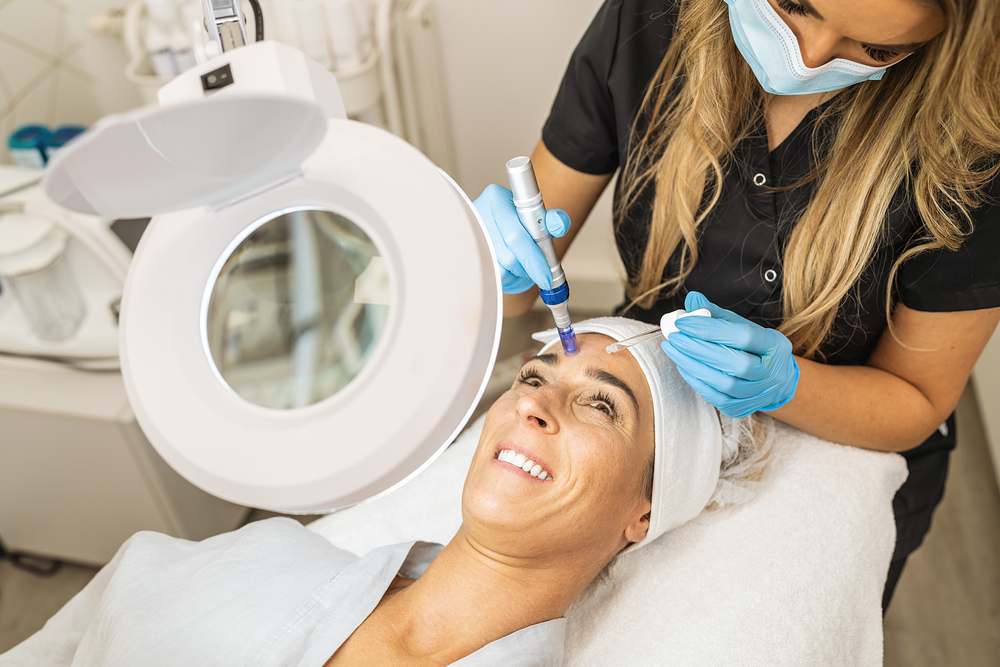
Microneedling for Anti-Ageing: Everything You Need to Know
As we get older, our skin naturally starts to change. Fine lines, wrinkles, and uneven texture can become more noticeable, and the skin may not bounce back as easily as it once did. While ageing is a natural process, there are treatments available that can help restore a youthful glow and support healthier-looking skin. One of the most popular non-surgical treatments for anti-ageing is microneedling.
This treatment has gained attention in recent years for its ability to stimulate the skin’s natural repair process and improve overall appearance. If you are curious about whether microneedling could be right for you, here is everything you need to know.
What is Microneedling?
Microneedling, also known as collagen induction therapy, is a cosmetic procedure that involves using a device with fine, sterile needles to create tiny punctures in the skin. These controlled micro-injuries stimulate the body’s natural wound-healing process, which triggers collagen and elastin production.
Collagen and elastin are essential proteins that keep the skin firm, plump, and elastic. As we age, the body produces less of these proteins, which is one of the main reasons fine lines and wrinkles begin to appear. By encouraging new collagen and elastin, microneedling helps to improve skin texture and reduce visible signs of ageing.
Benefits of Microneedling for Anti-Ageing
Microneedling offers a wide range of benefits for those looking to combat the signs of ageing. Some of the most common benefits include:
- Reduction of fine lines and wrinkles: By boosting collagen and elastin, the skin becomes smoother and more resilient, which softens fine lines and wrinkles.
- Improved skin texture: Microneedling can help reduce roughness, making the skin feel softer and appear more even.
- Minimised pores: The treatment can tighten the skin around pores, giving the skin a refined look.
- Enhanced firmness: By stimulating the deeper layers of the skin, microneedling can improve overall tightness and firmness.
- Better absorption of skincare products: The tiny channels created during treatment allow topical products like serums and moisturisers to penetrate deeper into the skin, increasing their effectiveness.
The Microneedling Procedure
A typical microneedling session begins with a thorough skin assessment to ensure the treatment is suitable for your skin type and goals. Your skin will be cleansed, and a topical numbing cream may be applied to reduce any discomfort during the procedure.
The practitioner then uses a specialised device to glide over the treatment area, creating thousands of microscopic punctures in the skin. Most patients describe the sensation as a light prickling rather than pain. Depending on the area being treated, a session usually takes between 30 to 60 minutes.
After the procedure, the skin may appear red and feel slightly sensitive, similar to mild sunburn. These side effects usually subside within a few days, and many people notice visible improvements in their skin within a few weeks as collagen production increases.
How Many Microneedling Treatments Do You Need?
While results can be seen after just one session, a series of treatments is usually recommended for optimal results. Most people undergo three to eight sessions spaced four to six weeks apart. The exact number of treatments will depend on your individual concerns and the condition of your skin.
For ongoing maintenance, some people choose to have microneedling treatments once or twice a year after completing their initial course.
Is Microneedling Safe?
When performed by a qualified professional, microneedling is considered safe and effective. It is suitable for most skin types, although there are some situations where it may not be recommended. For example, people with active acne, certain skin conditions, or open wounds should avoid treatment until their skin has healed.
As with any cosmetic procedure, there are potential risks such as temporary redness, swelling, or bruising. In rare cases, infection or scarring may occur, which is why it is important to choose a reputable clinic with trained practitioners.
Aftercare Tips
After a microneedling session, your skin will be more sensitive than usual, so proper aftercare is essential for the best results. Here are some tips to keep in mind:
- Avoid direct sun exposure and always wear sunscreen to protect your skin.
- Do not use harsh exfoliants or active skincare products such as retinol until your skin has fully recovered.
- Keep your skin hydrated with gentle moisturisers and serums.
- Avoid heavy makeup for at least 24 hours after treatment.
Following these steps will help your skin heal effectively and enhance the long-term benefits of the treatment.
Microneedling vs Other Anti-Ageing Treatments
Microneedling is often compared to other skin treatments such as chemical peels, laser therapy, or injectable treatments. While each option has its own benefits, microneedling is a popular choice because it is minimally invasive, has little downtime, and uses the body’s natural healing abilities.
Unlike some treatments that rely on chemicals or heat, microneedling is purely mechanical, making it suitable for those who prefer a more natural approach to skin rejuvenation.
Final Thoughts
Microneedling is a versatile and effective treatment for anyone wanting to reduce visible signs of ageing and restore a youthful appearance. By stimulating the body’s natural production of collagen and elastin, it can improve skin texture, firmness, and overall radiance.
If you are considering microneedling, the best step is to book a consultation with a qualified practitioner. They can assess your skin, discuss your goals, and recommend a tailored treatment plan that suits your needs. With the right care and a series of treatments, microneedling can be a valuable part of your anti-ageing routine.
Important Notice:
A comprehensive consultation is essential before making any decisions regarding cosmetic injectable treatments. Our clinical team prioritises your safety and tailors all treatment recommendations to your unique needs. Individual results and recovery may vary. This content is for educational purposes only and does not promote or advertise the use or supply of prescription-only products.





